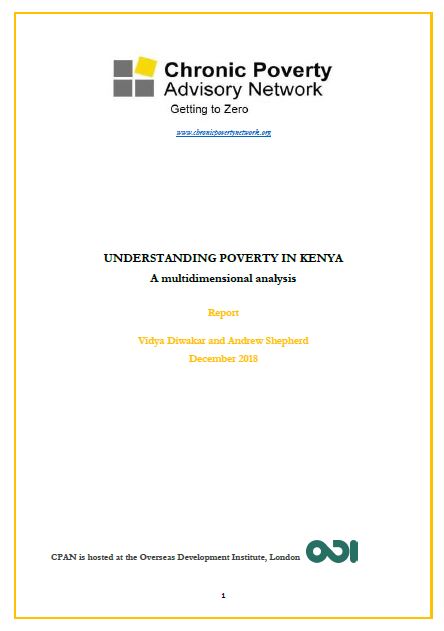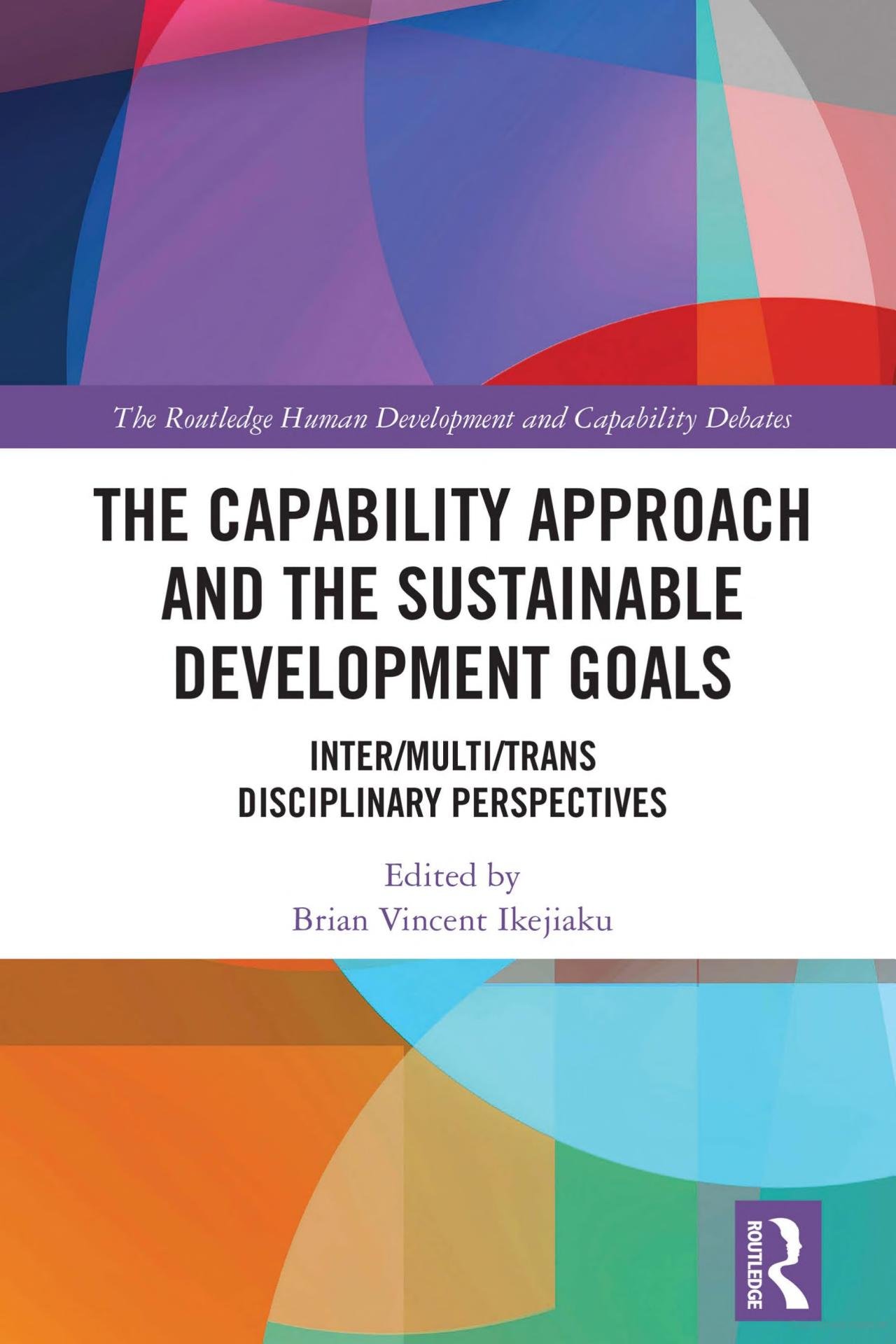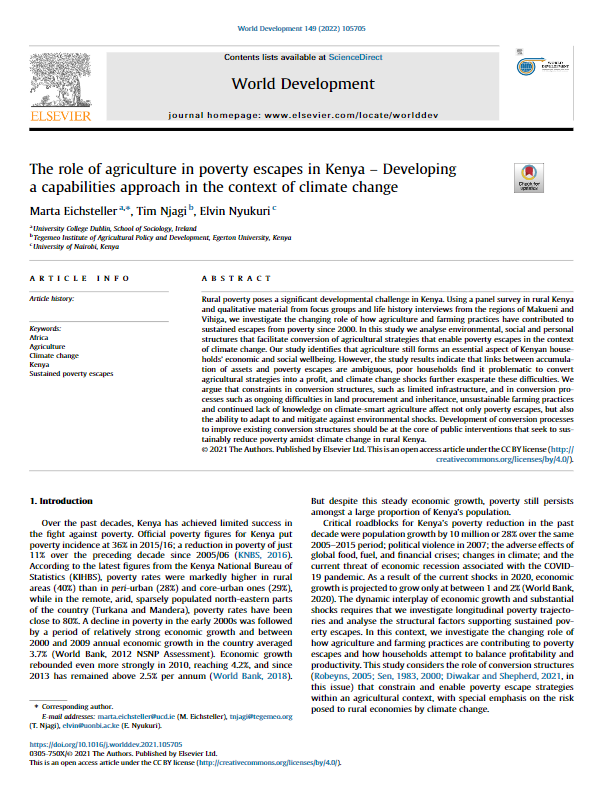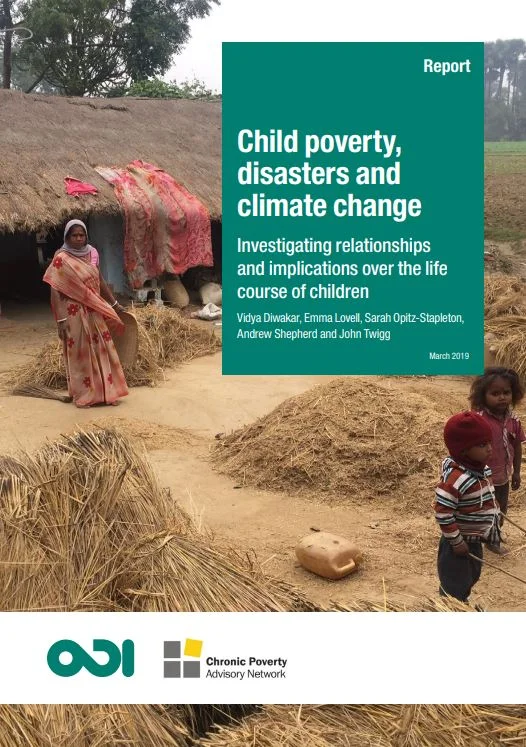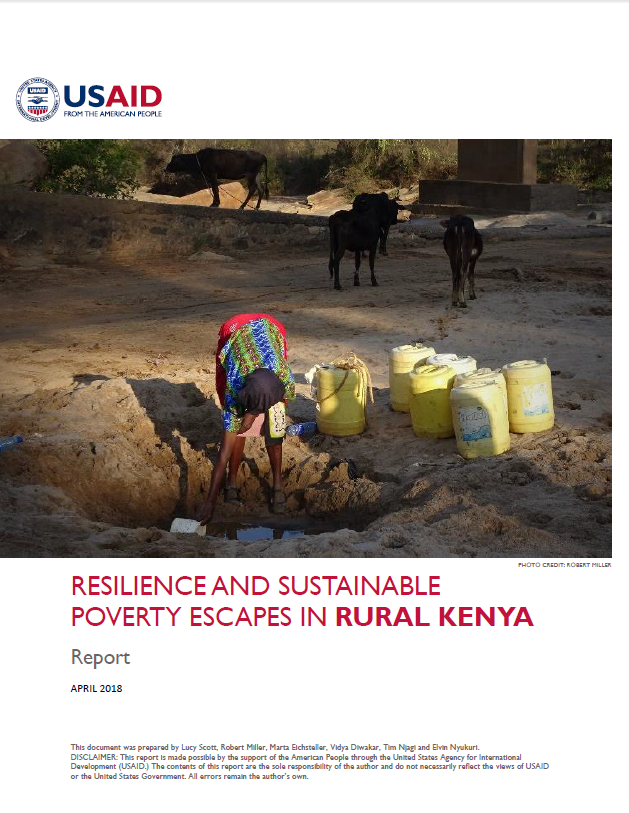The present report seeks to analyze development trends in Kenya and understand the ways in which various groups in the country continue to be left behind. Analysis of the nationally-representative Kenya Integrated Household Budget Survey (KIHBS) 2015/16 reveals that certain groups are consistently being left behind in Kenya, on account of income poverty status, gender, age, disability, area of residence, and intersecting inequalities.
The report explores how individuals and households are poor according to their resources, opportunities and choice, power and voice, and security. It contextualizes who is multidimensionally poor in an understanding of the political, socio-economic, environmental and conflict settings that affect life in the country today to get a sense of why these groups may continue to experience disadvantages on various fronts and often interlocking. The study also examine constraints and enablers of poverty reduction at a structural, contextual level and is accompanied by a related policy brief.
Authors: Vidya Diwakar and Andrew Shepherd
This report and the policy brief were financed by the Swedish International Development Cooperation Agency (Sida). The report and the policy brief present the views of the authors, which are not necessarily those of Sida or the Embassy of Sweden in Nairobi.

